What if you could effortlessly add some vibrant crunch, color, and delicious tang to almost any meal?
We have great news – YOU CAN!
Quick pickled veggies are super-easy, involve minimal preparation, and provide huge flavor!
If the thought of pickling our own vegetables intimidates you, you’re not alone. That was us! But we’re not talking about the traditional, time-consuming canning your grandmother might have done. This requires absolutely no canning skills, no fancy equipment and you can make a big batch that will last days or weeks!
When we discovered this, it opened up a whole new world! This has become a staple for us to have on hand all of the time because we love them that much!
SO EASY!
All you need is vinegar, water, salt and sugar…and, of course, some glass jars and a refrigerator! It’s an amazing way to enjoy fresh in-season fruits and vegetables that are so abundant throughout the year!
Quick pickled vegetables are simply raw veggies soaked in a vinegar-based brine, usually with some salt, a touch of sweetener, and optional spices. Unlike traditional pickling, there’s no fermentation and no boiling water baths—just fantastic flavor and texture, FAST! (Plus, the added bonus, these pickled veggies are not over-loaded with a ton of salt and sugar!) They are perfect for adding to, well, basically anything!
How do you pickle?
It’s as easy as 2 simple steps:
Step 1: Add sliced vegetables or fruits (yes, you can even pickle fruits) to a glass jar or container. Mason jars work great! We like to use 2 pint size mason jars (or you can use a larger quart size mason jar). Then, add your choice of herbs and seasonings if desired. Tightly pack your produce and seasonings into the jar, leaving 1/4 to 1/2 inch of space at the top.
Step 2: Make your brine…or the pickling liquid. Start with this basic formula:
1 cup vinegar + 1 cup water + 1 Tbsp kosher salt + 1 Tbsp sugar
- Add this to a small saucepan and bring it to a boil until the salt and sugar dissolve – about 5 minutes.
- Then, pour the liquid into the jars so your veggies (or fruits) are completely submerged.
- Allow the mixture to cool to room temperature (about 1 hour), seal the jar(s) or container(s) with an air-tight lid, shake the jar to evenly distribute the liquid and seasonings, and place the jar(s) in the fridge.
- It is best to let the jar sit in the fridge for at least a day before eating, but you can certainly tap in sooner if you just can’t help yourself. Use your judgment on when they have reached your desired texture and flavor. Your quick-pickled veggies should last at 2-3 weeks in the fridge (although ours never make it that long)!
See how easy it with this delicious Panzanella Salad!
So many ways to enjoy them!
The possibilities are endless when it comes to enjoying your pickled veggies. They take so many meals to another level – including salads, grain bowls, tacos, burgers, avocado toast, sandwiches – you name it. Here are just a few absolutely delicious ideas:
Banh Mi Burger Bowl or Banh Mi Burger
Baked Buffalo Cauliflower Salad
Korean Burgers with Pickled Radishes and Onions
Sweet Barbacoa Salad with Cilantro Lime Dressing
Spring Tuna Tacos with Pickled Cabbage
Arugula Quinoa Salad with Pickled Onions
Green Beans with Pickled Red Onions
Does it matter what kind of vinegar and salt you use?
It can be fun to experiment with different types of vinegar. It’s best to use vinegars that have at least 5% acidity – the label should tell you the acidity content. We like to use distilled white vinegar because it is neutral and allows the flavor of the produce and seasonings to shine through. Apple cider vinegar and white wine vinegar are also good options, but you will notice they add a different flavor. Red wine vinegar is another option, but keep in mind it may turn your veggies pink. We occasionally use red wine vinegar when pickling red onions for an extra vibrant color and flavor.
When it comes to salt, it is best to use kosher salt or pickling salt. Just make sure it doesn’t have any additives like iodine or anti-caking agents. Iodine can turn your vegetables dark and bitter and anti-caking agents can turn the liquid cloudy. Also, sea salt is not the best option due to its naturally occurring minerals that can affect your results.
Here are some other tips:
- Include herbs and spices! Just like with the vinegar, it’s fun to experiment with different seasonings. Mustard seeds, peppercorns, and bay leaves are the most classic additions. You can also include sliced garlic cloves, cumin seeds, rosemary, coriander, allspice, fennel seed, or celery seed, just to name a few. It is best to use fresh or whole spices because ground or powdered spices can turn your liquid cloudy. Try fresh basil, dill, mint or other fresh herbs too!
- Blue garlic? Don’t worry if you included garlic cloves and they suddenly appear blue or bluish green. This has to do with the reaction of enzymes and sulfur compounds in the garlic – and the acid in the vinegar can also contribute to the color change. Absent any signs of spoilage (like mold), the blue garlic should be safe to eat.
- Kick it up a notch! You can also add sliced chili peppers to your pickled vegetables (or pickle them all on their own). Some hot peppers may seem to lose a little of their kick the longer they sit in the liquid, while others may seem to get even spicier!
- Cook or not to cook? Some vegetables, like beets, carrots, or okra, can be boiled or steamed – until they are slightly tender – before pickling. Other vegetables, such as zucchini or cucumber, are best left raw. Again, whether to cook the veggies is a personal preference based on your desired texture and crunch!
- Keep them separate? Some people prefer to pickle vegetables separately, because different vegetables will pickle at different rates. Onions and zucchini will pickle faster than radishes or carrots. Also, some vegetables such as beets, radishes and red onions can “bleed” their colors, which can be good or bad depending on what results you are looking for. Pickling complementary veggies together can produce some great results…for example, carrots and daikon are a fantastic combination! As are radishes and red onions!
- Always 1:1? The 1:1 ratio of vinegar and water is a good starting point, but you can adjust the ratio to more or less vinegar based on your preference.
- Size matters! To help everything pickle at the same rate, we recommend slicing or chopping everything to a similar size.
- Pickle fruits? Yes, you can even pickle fruits! Try pickling blackberries, blueberries, cherries, grapes, peaches, strawberries or watermelon and see what you think.
- Beer instead of water? Yes! Instead of water, use your favorite beer (IPA and pale ale work great, as do lagers and stouts…it’s personal preference). Check out these flavorful Spicy IPA Pickled Veggies!
Zonya’s Take:
Nutritionally, there are several benefits to DIY quick pickling…
- You are skipping the rather questionable Sodium Bisulfate, Sodium Benzoate, and FD&C yellow #5 that is often used in pickled veggies you find at the store.
- These recipes let you be “in charge” of the sodium content. Since we are not attempting to make these shelf stable, you do not need to adhere to a high level of salt for “preserving.” You can use just the amount of salt you need for flavor, and many of you will find you don’t need much! These recipes are “middle of the road,” meaning we want you to taste something similar to what you are used to, but it is indeed lower than commercially pickled products. But feel free to use even less, especially if “less salt” is what you are accustomed to!
- It really is yet another way to fit more tasty vegetables into a meal!
What a great way to add more flavor and pizzazz to your next meal! Plus, these homemade veggies let you save some money too!
 LEARN MORE ABOUT THE NAPKIN!
LEARN MORE ABOUT THE NAPKIN!
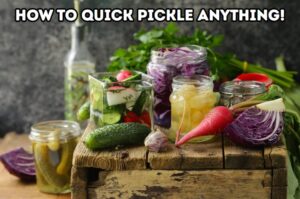
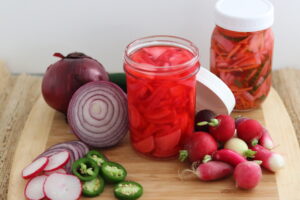
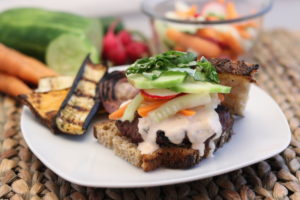
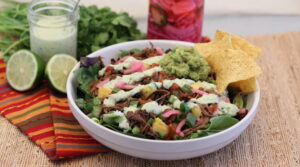
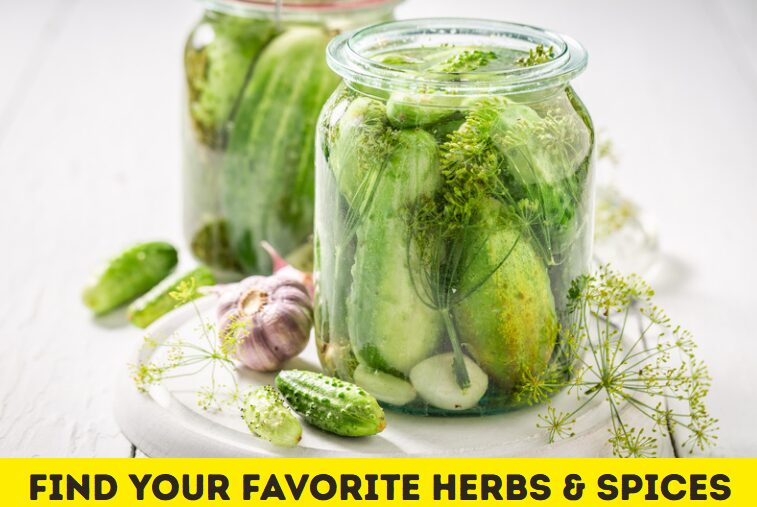
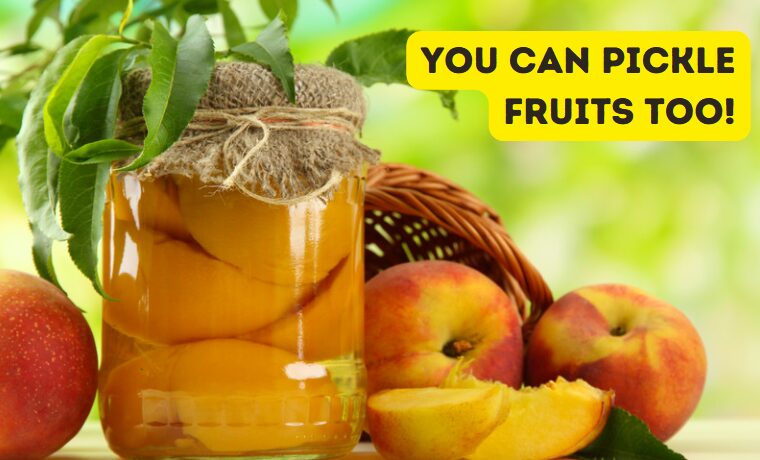
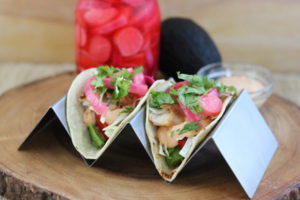
Excited to try !,, Ty